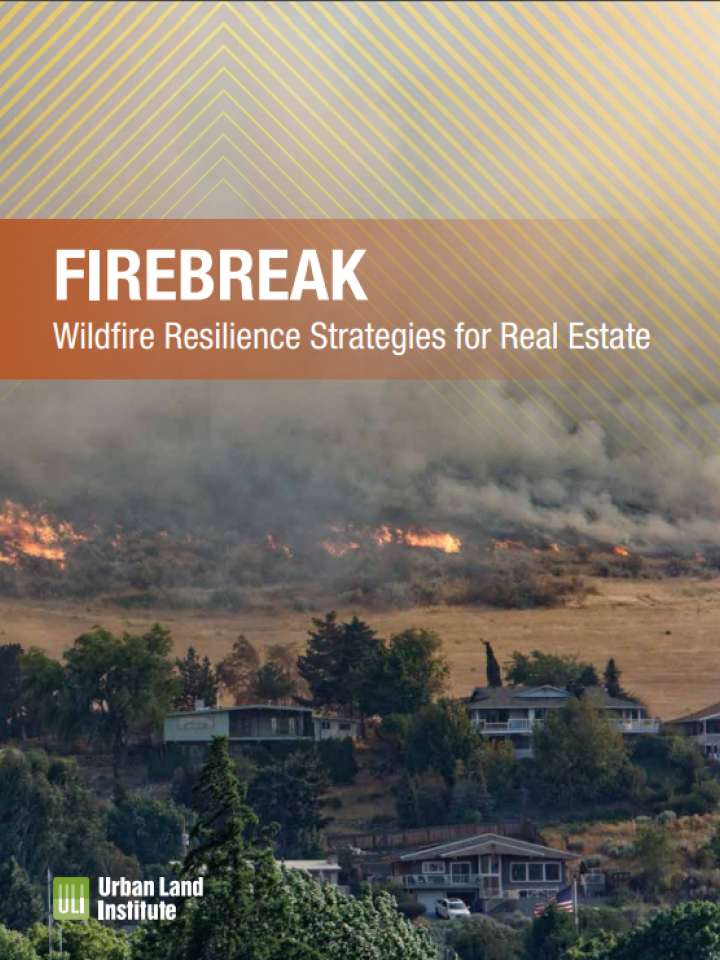Firebreak: wildfire resilience strategies for real estate
This report explores why wildfire is a significant risk factor and planning consideration across the United States, how the real estate community is responding with design methods, policies, and partnerships to mitigate the building damage, economic loss, and community trauma caused by wildfire, and what more can be done in the future.
As wildfire risk continues to escalate due to the impacts of climate change, continued action based on recognition of the interconnected nature of development and resilience will be critical. Key research findings include the following:
- Climate change: Hotter temperatures and reduced or more sporadic rainfall create drier vegetative conditions conducive to fire. Accordingly, climate change increases wildfire risk and will lead to a longer fire season with more instances of larger, less predictable, and more destructive fires. Hotter, drier climates also can make wildfires possible or much more likely to occur in locations that historically had little fire risk.
- Market outlook: The real estate industry is increasingly aware that infrastructure and people in high-risk areas are almost certain to be threatened by wildfire or to be affected by secondary impacts like smoke, power outages, or evacuations. Most developers continue to experience consumer demand in areas at risk from wildfire and are focused on integrating preventative and mitigating measures into new construction.
- Best practice: Resilient development, land, and infrastructure management can significantly decrease the negative outcomes of wildfire events. Wildfire resilience approaches include structure hardening, defensible space and vegetation management, strategic density in lower-risk areas, hazard-informed comprehensive and regional planning, evacuation route planning, and tenant and community engagement.
For more details on the key findings, please refer to the page 6 of the report.
Explore further
